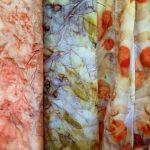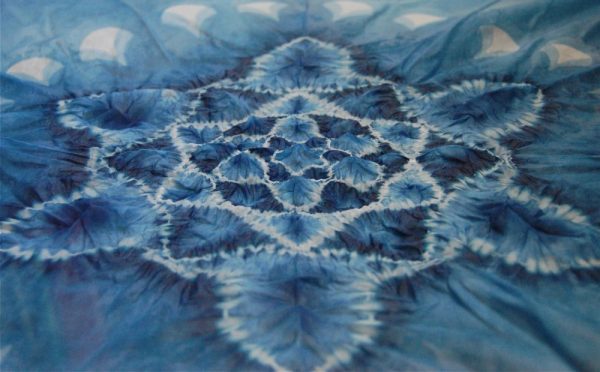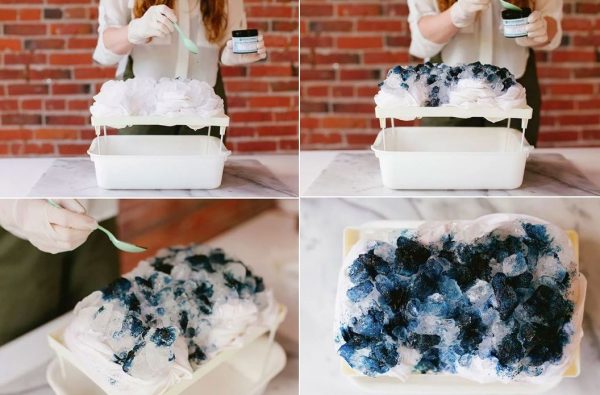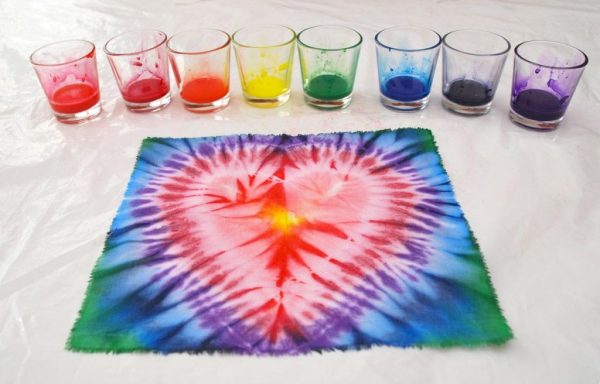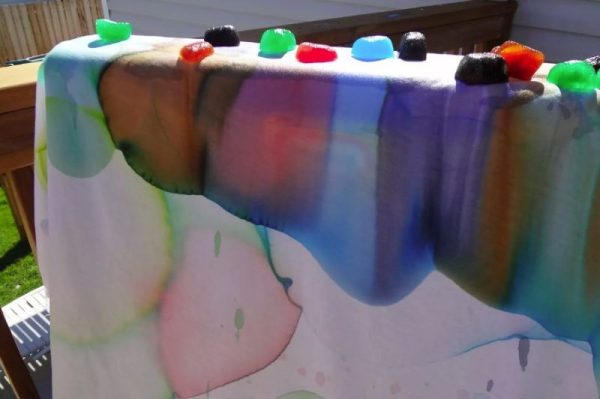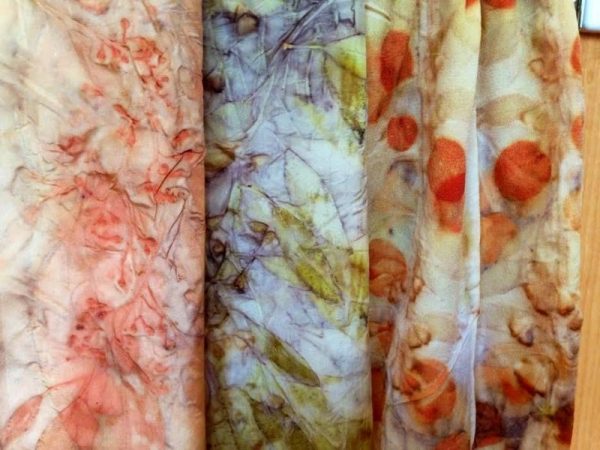There are many techniques for dyeing tissue. Some are commonplace and simple, others involve the use of unusual items, fixtures and supplies. These include the technique of painting matter with ice.
Method Basics
Achieving uniform dyeing of textiles at home is quite difficult. But this flaw can be a virtue! If the paint does not lie uniformly on the fabric, with influxes, a “melting” pattern will appear, which looks very beautiful and fashionable. Moreover, it will be almost impossible to spoil a thing: the result is unpredictable, but always original and wearable.
to contents ↑The “icy” technique is very exciting. Liquid pigments penetrate tissue areas with different intensities, because they leak out as ice cubes melt. It is impossible to repeat the drawing twice, but any thing will become a work of art.
What is required for work
To stain, you need to choose a white thing that is suitable in size - a blouse, t-shirt, tunic, and not necessarily a new one. You can use home textiles - linen, cotton. Artificial fabrics do not accept pigments well, so it is better to take only natural ones.
You also need to prepare:
- powder dyes of one or several shades;
- baking tray, tray, cat tray or other device for melting water;
- grid for drying dishes;
- ice cubes (2-3 handfuls);
- durable gloves.
Staining technology
A table or other work surface is covered with cellophane, newspapers. This will help protect the substrate from paint.
They put gloves on their hands and start painting things:
- a dish dryer is installed on the pallet (you can take another suitable grate);
- evaluate the gap between the grate and the pan - it should be large enough so that the fabric does not come into contact with melting water;
- they moisten the product, squeeze it and put it on the grate in an arbitrary order, if part of the fabric needs to be left white, then it is placed outside the grate;
- the thing can be left dry, but in this case the pattern will be clearer, brighter;
- apply ice cubes in a thick layer to the fabric;
- powder pigment is scattered directly over ice, mixing shades or performing monochrome “drawings”;
- leave the tray with the product at night so that the ice has completely melted and soaked it;
- to obtain the most saturated shades, lay a fabric for dyeing for 24 hours;
- drain the water from the pan;
- rinse the item in cold water 3-4 times until the water is clean, fabric softener can not be used;
- dried, used for its intended purpose.
To make the thing stylish, it is advisable to think through combinations of shades in advance. Some colors mix poorly with each other or look ugly nearby. Work must be in a well-ventilated area or with a respirator. According to reviews, following the “wet technique”, when the fabric is pre-wetted, the pattern is quite light. If necessary, it can be strengthened. To do this, re-stain those areas that you want to highlight.
A “melting” drawing on clothes can be performed even by a person without skills in working with paints. This technique is simple and very exciting, and the result will be the creation of a unique thing that can never be found in the second copy!

